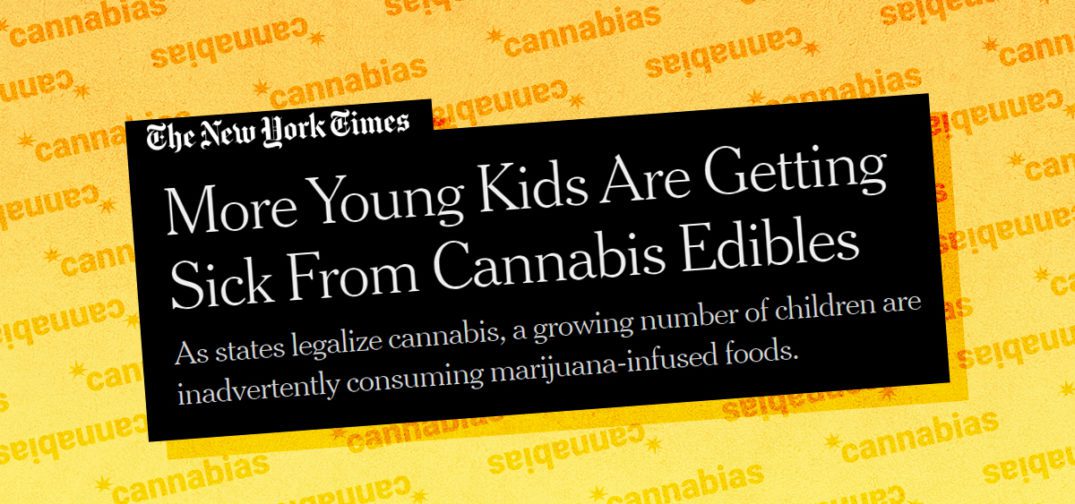Editor’s note: this article is part of our new series, “Cannabias,” where resident journalist and media studies professor TG Branfalt uses an academic lens to pinpoint concrete examples of anti-cannabis in the mainstream news. For a full introduction to the series and the framework TG uses to identify bias, click here.
The New York Times on January 14 published an article titled “More Young Kids Are Getting Sick From Cannabis Edibles” – a headline which you’ll find monthly in some form or fashion kicking around. Overall, the Times does balance the piece with its last four graphs explaining how consumers can prevent their children from accessing cannabis edibles. However like most other authors that cover this issue, they fail to note the very simple premise: of course more kids are getting sick because cannabis is legal which has led to a proliferation of edibles, and now that cannabis is legal parents are naturally going to be more likely to bring their children to ERs in these situations because there is less fear of arrest or other punishment.
Presence of bias:
Yeah, I know I’ve been here before, ranting about personal responsibility but it bears repeating – it’s up to the parents to keep cannabis out of the hands of children. Gun owners make the argument all the time, “Guns don’t kill people, people do.” Well, cannabis edibles that are safely locked up or out of reach don’t give kids exposure sickness; it’s down to the people who are irresponsible with such products. That’s the ideal.
Moreover, about halfway through the piece, the author states that Dr. Sharon Levy, the director of the Adolescent Substance Use and Addiction Program at Boston Children’s Hospital, told her that “Many adults and teenagers alike generally assume that edible marijuana products are harmless.” This is attribution bias, as you would be hard-pressed to find any responsible adult who thinks cannabis is totally benign, and teenagers are probably not the best indicator of what is and isn’t harmless. Levy also makes broad generalizations that are included in the story, such as “a whole lot more psychosis and cannabinoid hyperemesis syndrome” but neither Levy nor the author backs up these claims (context bias).
How to remedy:
Instead of going with another alarmist headline and fear-mongering story, why not focus on what parents can do better? That story could offer real solutions, instead of pushing the tired narrative that brands are creating infused candy that children just can’t wait to gobble up. Would the Times bother to run a story about how hard cider and hard seltzer packaging are reminiscent of popular soda brands or Capri Sun? Probably not, and keep in mind: alcohol poisoning actually kills people.
I will credit the Times with not using “weed” or “pot” in the coverage here, but I would also have liked to see some statistics on kids being accidentally exposed to alcohol or pharmaceutical drugs, or an acknowledgment that high-potency edibles are often used by patients with severe health conditions, either of which would help balance the story.
Get daily cannabis business news updates. Subscribe
End
